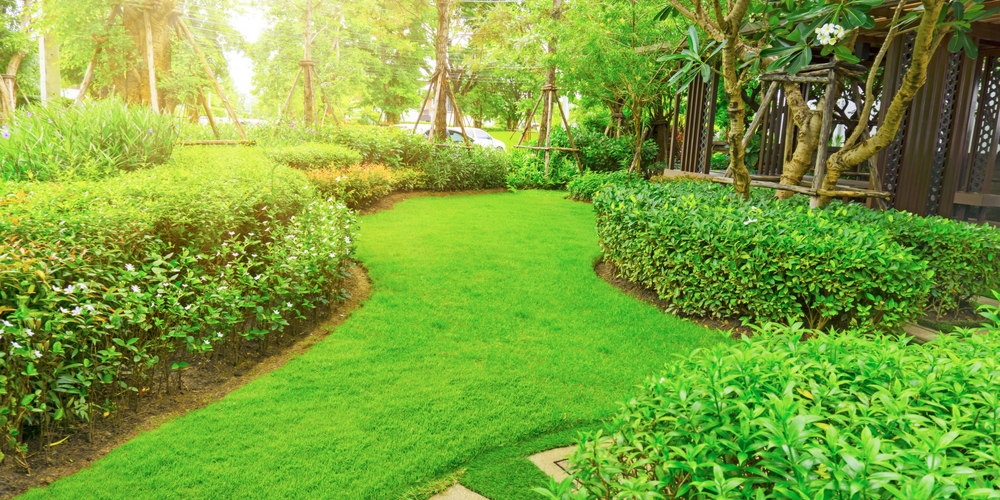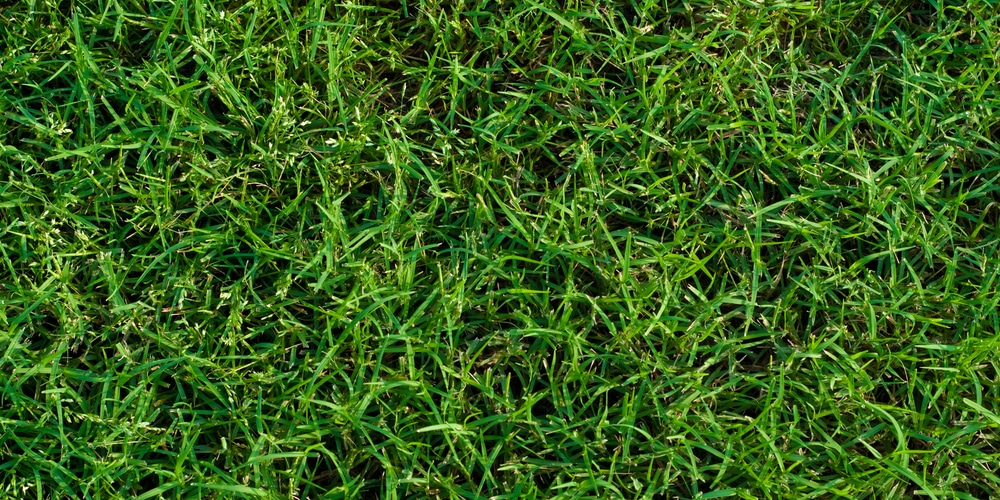One of the most common grasses you will find in the South is bermudagrass. This grass is known for growing in a variety of areas and conditions. It is often used on athletic fields, golf courses, bowling greens, tennis courts, and high-quality lawns. They are also used in areas where erosion control is necessary. Bermudagrass is a versatile type of grass that can be used in several ways. Let’s compare common bermuda grass vs hybrid bermuda grass.
Common bermuda grass vs hybrid bermuda grass

The grass offers vigorous, light-dark green, dense turf adaptable to most soils throughout the southern United States. USDA plant hardiness zones 5 and 6, but some strains do well in USDA plant hardiness zones 7 through 10.
Its exceptional drought, wear, and salt tolerance makes it suitable for areas near oceans. Moreover, because of its toughness, growth rate, and ability to adapt, bermudagrass can promptly establish and compete effectively against weeds. You can find this grass as seed, sod, or sprigs.
Caring for your bermudagrass is vital to maintaining a healthy lawn. This type of grass requires at least eight hours of sunlight each day and should be mowed to a height of 1 to 2 inches.
It is crucial to fertilize your bermudagrass regularly and water it deeply but less frequently. Bermudagrass is a very resilient type of grass, but it is important to take care of it to keep your lawn looking its best.
There are two main types of bermudagrass- common bermudagrass and hybrid bermudagrass.
Common Bermudagrass
As the name suggests, common bermudagrass is the most commonly found type of Bermuda grass. It is also known as cup grass, wiregrass, and couchgrass. It produces seeds that can be used to grow new plants. It’s tough grass found in tropical and subtropical areas, including the southern United States.
Common bermudagrass is drought resistant and can grow on many different soils. It is a popular choice for home lawns due to its easy establishment and low maintenance requirements.
Additionally, the grass produces many unsightly seedheads but is still frequently used because of its other benefits.
When adequately fertilized and mowed, common bermudagrass can create a beautiful, lush lawn. However, common bermudagrass does have some drawbacks. It produces unsightly seedheads, and it is not as fine-textured or as high-quality as some of the newer hybrid Bermuda grasses.
The texture of common bermudagrass ranges from medium to coarse. The grass has good cold tolerance and can withstand freezing temperatures better than many other types of Bermuda grass. It is also tolerant of high temperatures and can remain green throughout the summer months.
Caring for this bermudagrass is relatively easy. It has good shade tolerance and can grow in areas that receive as little as four hours of direct sunlight per day. However, the grass does best in the regions that receive eight or more hours of sunlight per day. Even though it’s drought-tolerant, common bermuda grass requires weekly watering to remain green.
This tough grass can withstand high traffic levels without showing signs of wear. It is a good choice for areas subject to high levels of foot traffic, such as playgrounds and sporting fields. Even though it tolerates traffic well, common bermudagrass will become thin and patchy if it is not mowed regularly.
Hybrid Bermudagrass
Hybrid bermudagrass is a creation of crossing two different types of bermudagrass. The hybrid bermudagrass is sterile, meaning that it cannot produce seeds. It is often used for sports fields, golf courses, and lawns that require low maintenance.
The hybrid bermudagrass delivers a high-quality lawn with fewer disease problems. However, it is more challenging to manage than the common bermudagrass.
There are different growth habits among the hybrid bermudagrasses. For instance, Tifway 419 has an upright growth habit, ideal for sports fields and golf course fairways.
Dwarf or ultra-dwarf bermudagrasses are used as golf course greens. They are complex to maintain, especially if you do not have reel-type mowing equipment. Pest problems may also occur under the high management program needed for the dwarf bermudagrass varieties.
Unlike common bermuda grass, hybrid bermuda grass does not produce seeds.
So, it’s available in three forms: sods, plugs, and sprigs. Sods come as cut-outs obtained from existing grass beds that include grass patches and a layer of soil, all held together by the root system. They come in 3-square-foot sizes, but you can also find them in rolls (about 10 square feet each) and even pallets (450 square feet).
Plugs are 2- to 4-inch chunks of sod that can be either round or square. They’re produced from seedlings grown in trays. Sprigs are 3- to 6-inch pieces of grass runners without any soil.
How to Pick the Right Bermudagrass for Your Lawn
These two types of bermudagrass have different characteristics. That means you have to decide which grass would be best for your lawn. Here are some factors to consider when making your decision:
1) Climate
One factor that differentiates the two types of bermudagrass is climate. Hybrid bermudagrass is more tolerant to cold weather than common bermudagrass. If you live in an area with mild winters, either kind of bermudagrass will do. But if you live in an area with very cold winters, hybrid bermudagrass is better.
2) Shade Tolerance
Shade tolerance is another crucial factor to consider. How much sun does your lawn get? Common bermudagrass is a better option if it’s in a shady spot because it tolerates shade better than hybrid bermudagrass.
3) Maintenance
The amount of maintenance your lawn needs is another critical factor. If you want a low-maintenance lawn, hybrid bermudagrass is the better choice. It requires less mowing and fertilizing than common bermudagrass.
4) Seed or Sod?
You also have to decide whether you want to start your lawn from seed or sod. If you want to get your lawn going quickly, sod is the way to go. It’s also a good choice if you have a large area.
Seed is a better option if you have a small area to seed or if you want to save money. It’s also an excellent choice to mix and match different grasses on your lawn.
Common bermuda grass vs hybrid bermuda grass: Final Verdict!
Now that you know the difference between common bermudagrass and hybrid bermudagrass, it’s time to decide.
If you live in an area with mild winters and want a low-maintenance lawn, hybrid bermudagrass is the way to go. But, if you live in an area with very cold winters and your lawn is in a shady spot, common bermudagrass is the better choice. But, no matter which type of bermudagrass you choose, you’ll have a beautiful, green lawn.
Related Article: Best Time of Year to Plant Bermuda

